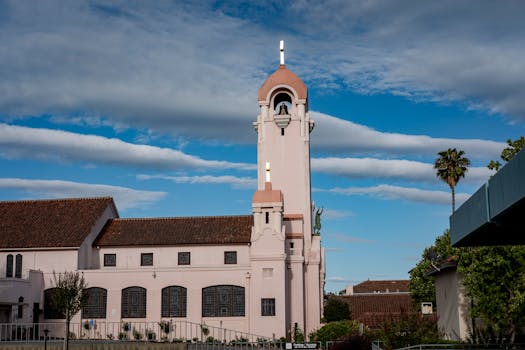Exploring The Rich History of Misión Santa Rosa de las Palmas (Todos Santos) (1733-1840)
Exploring The Rich History of Misión Santa Rosa de las Palmas (Todos Santos) (1733-1840)
Introduction
Under the radiant sun, the weathered stone walls of Misión Santa Rosa de las Palmas stand tall, painting a vivid picture of a time long past. Nestled in the heart of Todos Santos, Mexico, this historical mission invites visitors to embark on a journey through time. Its winding paths and ancient corridors whisper tales of faith, struggle, and endurance. Join us as we delve into the rich history of Misión Santa Rosa de las Palmas.
Establishment of Misión Santa Rosa de las Palmas
In 1733, Jesuit missionary Sigismund Taraval laid the foundation of Misión Santa Rosa de las Palmas. Originally, it was a visita, or a subsidiary mission, of Misión Nuestra Señora del Pilar de La Paz Airapí. The mission, named after Saint Rose of Lima, the first canonized saint of the Americas, was nestled in the heart of the indigenous Pericú territory.
Early Challenges and Perseverance
The mission's initial years were marked by significant challenges. The harsh desert climate and the resistance of the Pericú people posed considerable obstacles. But the Jesuit priests, driven by their unwavering commitment to spreading Christianity and establishing a Spanish presence in the region, persevered.
The Mission as a Cultural Hub
As Misión Santa Rosa de las Palmas grew, it emerged as a crucial hub for cultural exchange. The Jesuits introduced new agricultural techniques, including the cultivation of wheat, barley, and grapes, thereby transforming the local economy. They also brought European traditions, music, and language, which melded with the indigenous culture, creating a unique blend of customs and practices.
The Downfall: Political Tensions and Decline
However, the mission's flourishing period was short-lived. In 1768, the Jesuits were expelled from all Spanish territories due to political tensions with the Spanish Crown. The Franciscans took over the mission, but their tenure was also brief. By 1773, the Dominicans were in charge, marking the beginning of a period of decline for Misión Santa Rosa de las Palmas.
Endurance and Legacy
Despite the hardships, the mission remained an integral part of the local community. Even after its official closure in 1840, the mission's influence continued to be felt. Its legacy can be seen in the town of Todos Santos, which grew around the mission.
Misión Santa Rosa de las Palmas Today
Today, Misión Santa Rosa de las Palmas stands as a testament to the resilience and determination of the early missionaries and the indigenous people they sought to convert. Its crumbling walls and faded frescoes tell a story of faith, struggle, and endurance.
Visiting the mission is like stepping into a time machine. As you wander through its ancient corridors, you can almost hear the echoes of the past - the tolling of the mission bells, the murmur of prayers, the laughter and chatter of the local people. It's a humbling experience, a reminder of our shared human history and the enduring power of faith and community.
Experience the Rich Cultural Tapestry of Todos Santos
So, why not take a detour from the beaten path and visit Misión Santa Rosa de las Palmas? Not only will you get to witness a piece of history, but you'll also get a chance to experience the rich cultural tapestry of Todos Santos. Trust me, it's a journey you won't forget.
Conclusion: More Than Just a Historical Landmark
In the end, Misión Santa Rosa de las Palmas is more than just a historical landmark; it's a symbol of the cultural, spiritual, and historical richness of Todos Santos. It's a place that invites us to reflect, to learn, and to connect with our shared past. And in doing so, it reminds us of the enduring power of faith, community, and human resilience.

Sign up for Sonoma County Navigator
Discover Sonoma County! Latest News, places to play, stay, eat, live, shop, learn and more!
No spam. Unsubscribe anytime.










